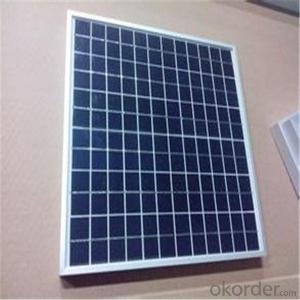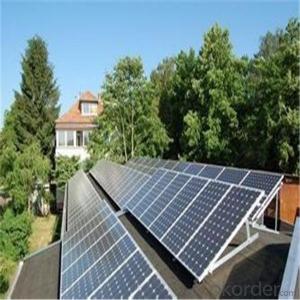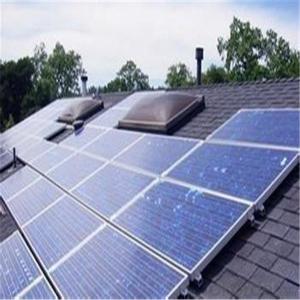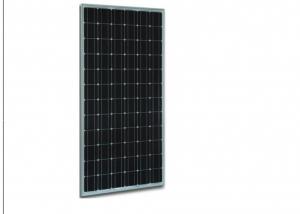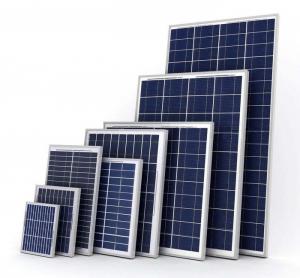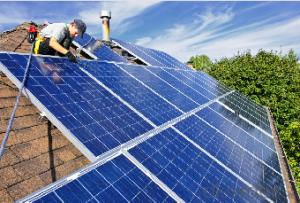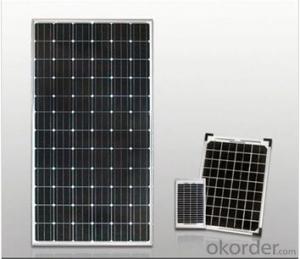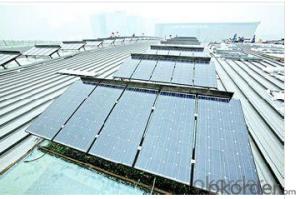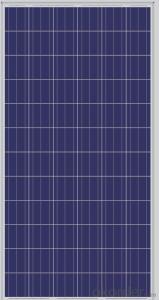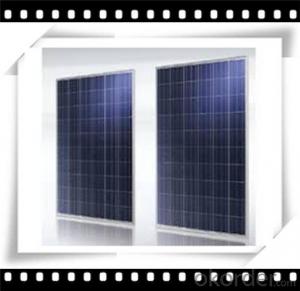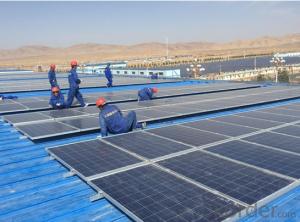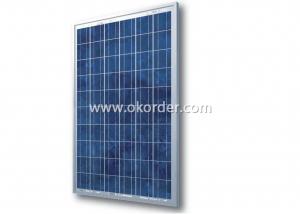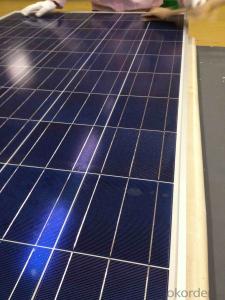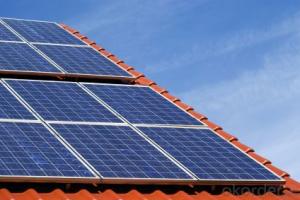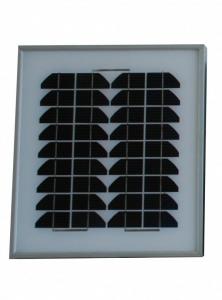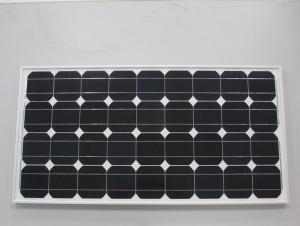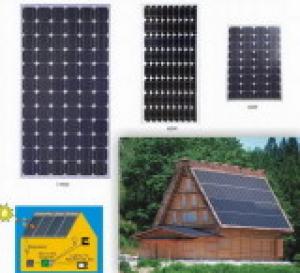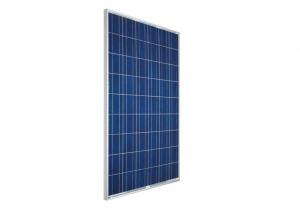280w High Efficiency Poly Solar Panel from CNBM - Solar Panels Boulder
- Loading Port:
- Shanghai
- Payment Terms:
- TT OR LC
- Min Order Qty:
- 1000 watt
- Supply Capability:
- 100000 watt/month
OKorder Service Pledge
OKorder Financial Service
You Might Also Like
Specification
Basic Info.
Model NO.: | GP-280P-72 | Material: | Polycrystalline Silicon |
Attribute (E. G.: Size): | Value (E. G.: 12 Inches) | Power: | 280W |
Export Markets: | Global | Trademark: | Gi-Power |
Packing: | Standard Export Packaging | Standard: | TUV; CE; ISO |
Origin: | Guangdong, China | HS Code: | 8541402000 |
Production Capacity: | 70mw/Year |
Product Description
280W/36V solar panel/module for solar power plant.
Quality Ensurance:
1. Excellent A Grade solar cell from Motech or Hanwha solar.
2. Excellent backsheet from SFC, 3M;
3. EVA from Bridgestone / First;
4. Junction box with UL and TUV listed - GZX, IP65;
5. High transmission low iron tempered glass from Xinyi Glass - China Top 1;
6. Solar panels with TUV, CE, ISO9001 certified.
Strong, lightweight aluminum frame design with reinforced sealing and load hold to prevent freezing and warping, and stand against high wind.
Under Standard Test Conditions(STC): Irradiance of 1000W/m2, Am1.5 and 25º C cell temperature
Operating Temperature: -40 ~ +85° C
Storage Temperature: -40 ~ +85° C
Mechanical Characteristics:
Dimensions: 1956mm(L) x 992mm(W) x 50mm(H)
Weight: 24KG
Polycrystalline 156*156 solar cells: 72 cells
Module Warranty:
Warranty on material and workmanship: Five years
Guaranteed output of 90% after 10 years and 80% after 25 years.
| Performance | ||
| Rated Power[Pmax] | 280W | |
| Power Tolerance | ± 3% | |
| Nominal Voltage | 36V | |
| Design Life | 25 years | |
| Electrical Characteristics | ||
| Maximum Power [Pmax] | 280W± 3% | |
| Maximum Power Voltage [Vmp] | 36.43V± 3% | |
| Maximum Power Current [Imp] | 7.65A± 3% | |
| Short-Circuit Current [Isc] | 8.23A± 3% | |
| Open-Circuit Voltage [Voc] | 43.92V± 3% | |
| Current Temperature Coefficient | 0.08%/º C | |
| Voltage Temperature Coefficient | - 0.32%/º C | |
| Power Temperature Coefficient | -0.38%/º C | |
| Maximum System Voltage | 1000V | |
Company Profile
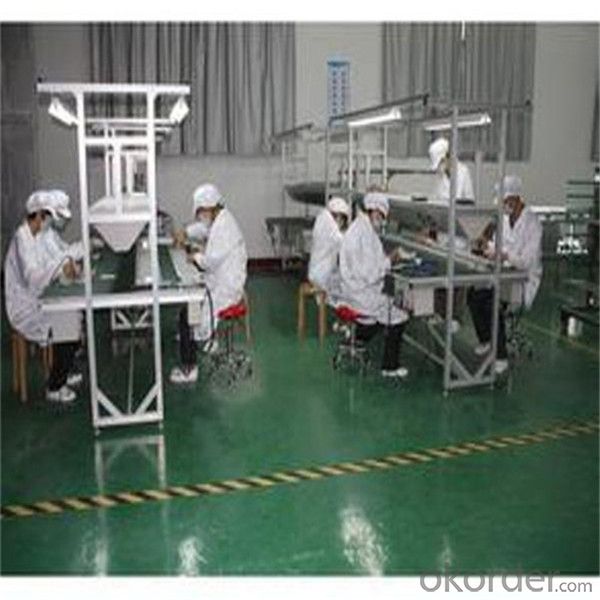
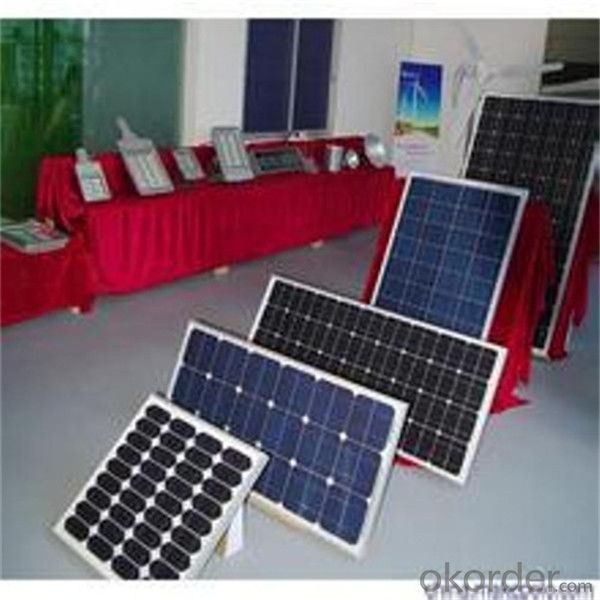
Business Type: Manufacturer
Main Products: Solar Panel , Solar Module , PV Panel , PV Module , Poly Crystalline Solar Panel , Poly Crystalline Solar Module
Number of Employees: 202
Year of Establishment: 2009-03-26
Management System Certification: ISO 9001
OEM/ODM Availability: Yes
- Q: Can solar panels be used for charging outdoor power tools?
- Yes, solar panels can be used for charging outdoor power tools. Solar panels generate electricity by converting sunlight into energy, which can be used to charge batteries or power devices like outdoor power tools. This eco-friendly and cost-effective solution provides a sustainable way to charge outdoor power tools without relying on traditional electrical outlets.
- Q: Can solar panels be installed on a rented property?
- Yes, solar panels can be installed on a rented property. However, it is important to check with the property owner or landlord before proceeding with the installation. Some landlords may have restrictions or specific guidelines for installing solar panels, while others may require written permission. It is recommended to discuss the matter with the property owner and potentially reach a mutually beneficial agreement.
- Q: In some countries where electric generation is low, they are not available easily.
- Supply and demand, my friend.
- Q: Can solar panels be installed on a gas station or fueling facility?
- Yes, solar panels can be installed on a gas station or fueling facility. In fact, many gas stations and fueling facilities are increasingly adopting solar power as a means to reduce their carbon footprint and save on energy costs. These solar panels can be installed on rooftops, canopies, or even as carports, making them a versatile and effective solution for powering these energy-intensive facilities.
- Q: how much energy does solar panels save you? (like a month, year, etc)
- It depends on the size of the solar panels and the intensity of the solar-light. So, there's difference in every place. It's impossible to answer unless there's detail of panel size, panel quantities, average rainfall, average solar days, etc.
- Q: Are solar Panels worth it, Do they really quot;save moneyon electricity?
- I say yes, I had a method put in a couple of months ago. I paid $6K and my utility paid $0K. I should destroy even in about 6 years. The procedure is guaranteed for 25 years, so i will have as a minimum 9 years of free vigour. I went from a invoice of round $200 per month to underneath $20 in the summer. I will pay a bit of extra in the winter months given that much less daytime, but i do not use as so much power within the wintry weather. Each and every 2 months electrical power goes up an ordinary of 5%, so while my neighbors have a larger bill each and every month, i will be staying underneath $50 for a long time. Even with out the rebate i would have a smash even time of about 0 years, nonetheless 5 years of free vigour.
- Q: Can solar panels be installed on a balcony or terrace?
- Yes, solar panels can be installed on a balcony or terrace. However, it is important to consider the structural integrity and load-bearing capacity of the balcony or terrace before installation. Additionally, the orientation and shading of the area should be evaluated to ensure maximum sunlight exposure for efficient energy generation. Consulting with a professional solar installer is recommended to determine the feasibility and safety of installing solar panels in this specific location.
- Q: Can solar panels be installed on schools or educational institutions?
- Yes, solar panels can be installed on schools or educational institutions. In fact, many schools have already adopted solar energy as a sustainable and cost-effective solution. Installing solar panels on educational institutions not only reduces their carbon footprint but also provides valuable educational opportunities for students to learn about renewable energy.
- Q: Ok so my electric bill is through the roof because of the air conditioner (mini-split). Is there any kinds solar panel I can buy at a store and install it myself? Do I need any skills? Which brand? blah...blah...blah...
- Unless you live in an area with a very high UV index, like Las Vegas for example, solar panels are not cost-effective. You definatly should not attempt to install solar power yourself if you intend to power a residence with it (unless you live in a shack). A certified electrician is required in order to connect your equipment to your house's electrical system. It isnt just as simple as a few panels. You need a converter that turns the DC voltage generated into AC. You also need equipment to connect to the metering system for your house. If you want to see if it is cost effective, you will need your electric bills that show usage for a year and the price per kWH. There are a lot of websites that have calculators for solar power systems.
- Q: name things someone could use solar panels for or make with solar panels? (use solar energy i mean?)
- All depends on how many watts you have. I ran a small boom box off a 5w panel before with no problem. The higher the wattage, the more you can run.
Send your message to us
280w High Efficiency Poly Solar Panel from CNBM - Solar Panels Boulder
- Loading Port:
- Shanghai
- Payment Terms:
- TT OR LC
- Min Order Qty:
- 1000 watt
- Supply Capability:
- 100000 watt/month
OKorder Service Pledge
OKorder Financial Service
Similar products
Hot products
Hot Searches
Related keywords
